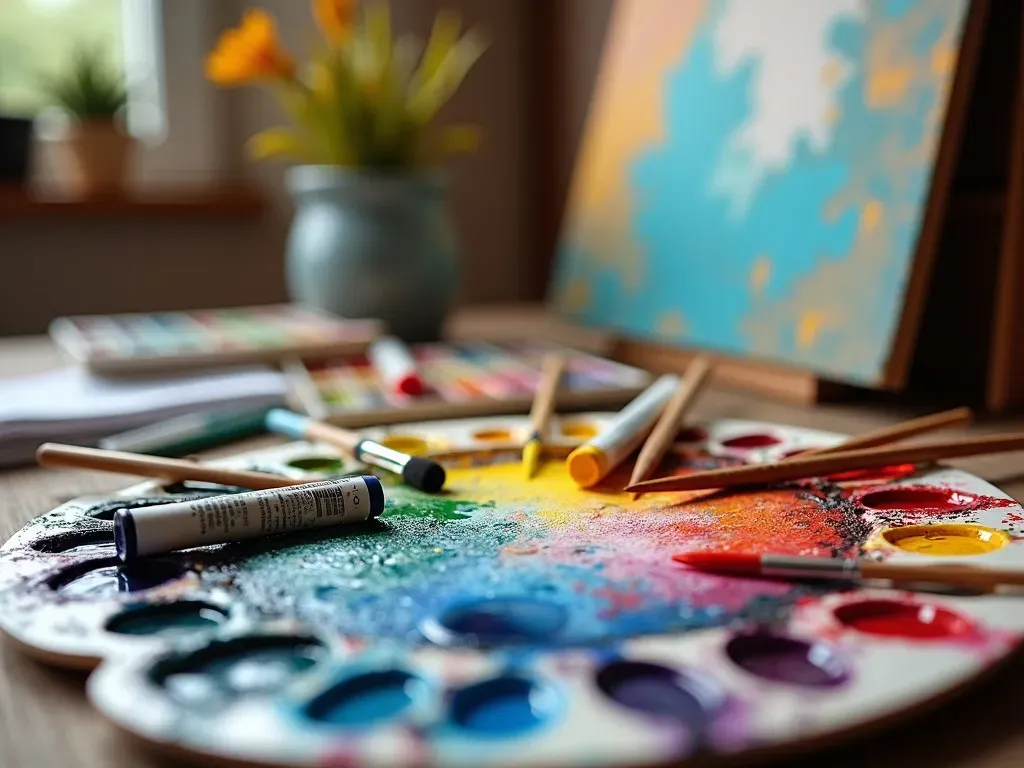Good oil paints are an artist’s essential tool, impacting every aspect of the painting process from color vibrancy to texture. Whether you’re a beginner or a professional, the quality of your oil paints can significantly influence the final outcome of your artwork. In this article, we explore the best oil paints available, how to choose them, and other important considerations for both novice and seasoned artists.
Understanding Good Oil Paints
When we talk about good oil paints, we refer to paints that offer excellent pigment quality, durability, and ease of use. Good oil color paints are composed of pigments suspended in a binder, typically linseed oil, which gives the paint its smooth texture and allows for blending. The best oil colors showcase high pigmentation, allowing artists to achieve vibrant hues and richness in tonal depth.
Key Features of Quality Oil Paints
- Pigment Quality: Look for good oil paint brands that use high-quality pigments, which enhance the longevity and vibrancy of colors.
- Lightfastness: This indicates how resistant the paint is to fading when exposed to light. Quality oil paints generally have excellent lightfastness ratings.
- Consistency: Good oil paints should have a smooth, buttery consistency that spreads easily and dries uniformly.
- Color Range: The best oil paint brands often provide a wide range of colors to choose from, catering to various artistic needs.
Popular Oil Paint Brands and Their Features
Here is a comparative table of some popular oil paint brands based on quality, pricing, and features.
| Brand | Quality Level | Price Range | Best For | Lightfastness |
|---|---|---|---|---|
| Gamblin | High | $4 – $15/tube | Beginners & Professionals | Excellent |
| Winsor & Newton (Winton) | Moderate | $7 – $12/tube | Students & Casual Artists | Good |
| Sennelier | High | $10 – $20/tube | Professional Artists | Excellent |
| Michael Harding | High | $10 – $30/tube | Advanced Artists | Excellent |
| Van Gogh | Moderate to High | $5 – $10/tube | Beginners | Good |
| Old Holland Classic | Very High | $20 – $40/tube | Professional Artists | Excellent |
Criteria for Selecting Good Oil Paints
-
Budget: Determine how much you’re willing to invest. There are affordable oil paint options that don’t compromise quality. Brands like Gamblin and Winsor & Newton offer a good balance of cost and quality.
-
Skill Level: As a beginner, a set of student-grade paints may suffice. More experienced artists might prefer professional-grade options that provide deeper pigmentation and richness.
-
Desired Project Outcome: For works intended for exhibitions or sales, invest in the best quality oil paints you can afford to ensure lasting quality.
-
Color Availability: Check if the brand provides colors you regularly use or specific shades you require for your projects. Some brands may offer unique pigments that others may not.
Tips for Using Oil Paints Effectively
- Mixing Colors: Master the basic principles of color theory to enhance your palette and create new shades.
- Layering Techniques: Utilize glaze and impasto techniques for dynamic textures and depth.
- Drying Times: Be aware that oil paints can take a long time to dry. Plan your workflow accordingly.
FAQs
Q1: What are the best oil paints for beginners?
A1: The best oil paints for beginners include brands like Gamblin, Van Gogh, and Winton by Winsor & Newton. These options are affordable, offer good pigmentation, and have user-friendly textures.
Q2: Can I use oil paints to create detailed paintings?
A2: Yes, good oil paints allow for detailed work when used properly. They can dry slowly, which provides artists with ample time to refine their details.
Q3: How do I store oil paints properly?
A3: Store oil paints in a cool, dry place, away from direct sunlight. Ensure that the tubes are tightly sealed to prevent the paint from drying out.
Q4: Is it necessary to buy professional-grade oil paints as a beginner?
A4: It’s not necessary for beginners to invest in professional-grade paints. Student-grade options offer excellent quality for practice and learning without overspending.
Q5: What are some tips for maintaining oil paint brushes?
A5: Clean brushes with solvent or soap and warm water immediately after use. Consider conditioning the bristles with a little bit of oil to maintain their shape.
Recommended Oil Paint Sets
Here are some top-rated oil paint sets for both beginners and professionals:
| oil paint set | Price | Type | Good For |
|---|---|---|---|
| Winsor & Newton Winton | $30 – $45 | Student Quality | Beginners |
| Gamblin 1980 | $50 – $70 | Artist Quality | Beginners & Intermediate |
| Sennelier Artists Oil | $100+ | Professional Quality | Serious Artists |
| Old Holland Classic Oil | $200+ | Premium Quality | Professional Artists |
Conclusion
Selecting good oil paints involves understanding your artistic needs and preferences. By considering factors such as pigment quality, price, and the intended use of your artwork, you can find the right oil paints tailored to your style. The right choice of oil paints can significantly elevate your artwork, making it essential for any artist—whether a beginner or a professional—to invest wisely in their materials.
For further reading and reviews on the best oil paints, you can visit My Modern Met.
Remember, the journey to mastering oil painting begins with choosing the right tools—so choose wisely, and let your artistic talent shine through!
